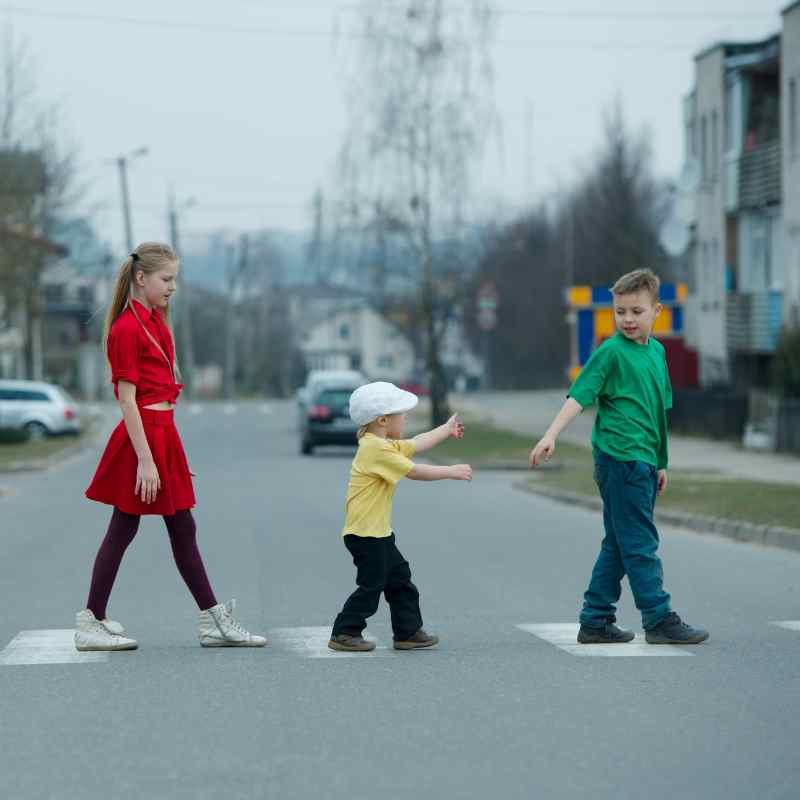Learning to cross the street is an important part of the coming-of-age process all kids encounter, much like learning to tie shoelaces or ride a bike without training wheels. However, something as simple as teaching children to cross the street properly and re-educating them as they begin to test familiar boundaries into their teenage years can save a child’s life.
This is especially crucial considering California recently took away punitive repercussions for jaywalking, or the act of crossing or walking in the street without regard for approaching traffic. This loosening of the law may empower children to cross the street when it is not safe to do so –especially if they are being pressured by their friends.
Even though pedestrians are no longer ticketed for crossing the street outside of a cross walk, the absence of punitive measures (such as getting fined or a ticket while crossing), doesn’t mean that people should cross the street when it’s not safe to do so. The new law only decriminalizes jaywalking in certain instances and all pedestrians can still be ticketed for jaywalking if they cross the street in a reckless or unsafe manner.
Here are some tips to remind your kids that crossing the street safely prevents legal trouble and life-threatening injuries even when their friends tell them “jaywalking is legal now:”
- Look both ways before crossing the street - It is important to look left, then right, and then left again before stepping foot off the curb. The phrase "stop, look, listen" is a helpful mnemonic device that can help children and teens remember this rule. If possible, encourage your child to make eye contact with the driver approaching or turning toward them. If the driver looks directly at them, they’ve noticed them. If not, they should wait until the driver looks at them and stops.
- Use crosswalks and follow the traffic signals - Crosswalks are designed to make it easy and safe for pedestrians to cross the street. If there isn’t a crosswalk available, encourage them to use street corners as indicators to cross. If they go into the middle of the street or between parked cars it limits how visible they are to oncoming traffic. Remind children to follow the instructions of traffic signals and to wait for the walk signal before crossing at a crosswalk.
- Stay visible - Remind your child to make themselves “seen” by wearing bright clothing or light up safety armbands; especially if they are out at night and unaware of their surroundings. It’s best not to assume the driver can see you, and rather assume that they can’t.
- Avoid distractions - Distractions such as talking on the phone or listening to music loudly make kids less aware of their surroundings. While a child may not want to put away their devices, ask that they do so especially when crossing the streets. This includes paying attention to traffic signals or signs and staying alert for potential hazards. It’s important for kids to read the traffic patterns, if they sense a car isn’t slowing down, even if the sign says to walk, it’s important to wait.
- Follow rules for bicycle and scooter safety - Kids who are riding bikes and scooters need to follow traffic signals and patterns – and not run red lights because it’s easier than stopping. It is important that they know the value of these rules, so they don’t accidentally injure a pedestrian or get injured themselves.
Lastly, it’s important to remind children about these common rules as they get older and gain more freedom. When laws change such as the recent jaywalking rule, it is a perfect time to reeducate your tweens and teens.
The Injury Prevention Program at MemorialCare Miller Children’s & Women’s Hospital Long Beach is committed to educating the community on proper street safety through special classes and educational handouts. By following these tips, parents and caregivers can help reduce the risk of accidents and keep children and teens safe.




